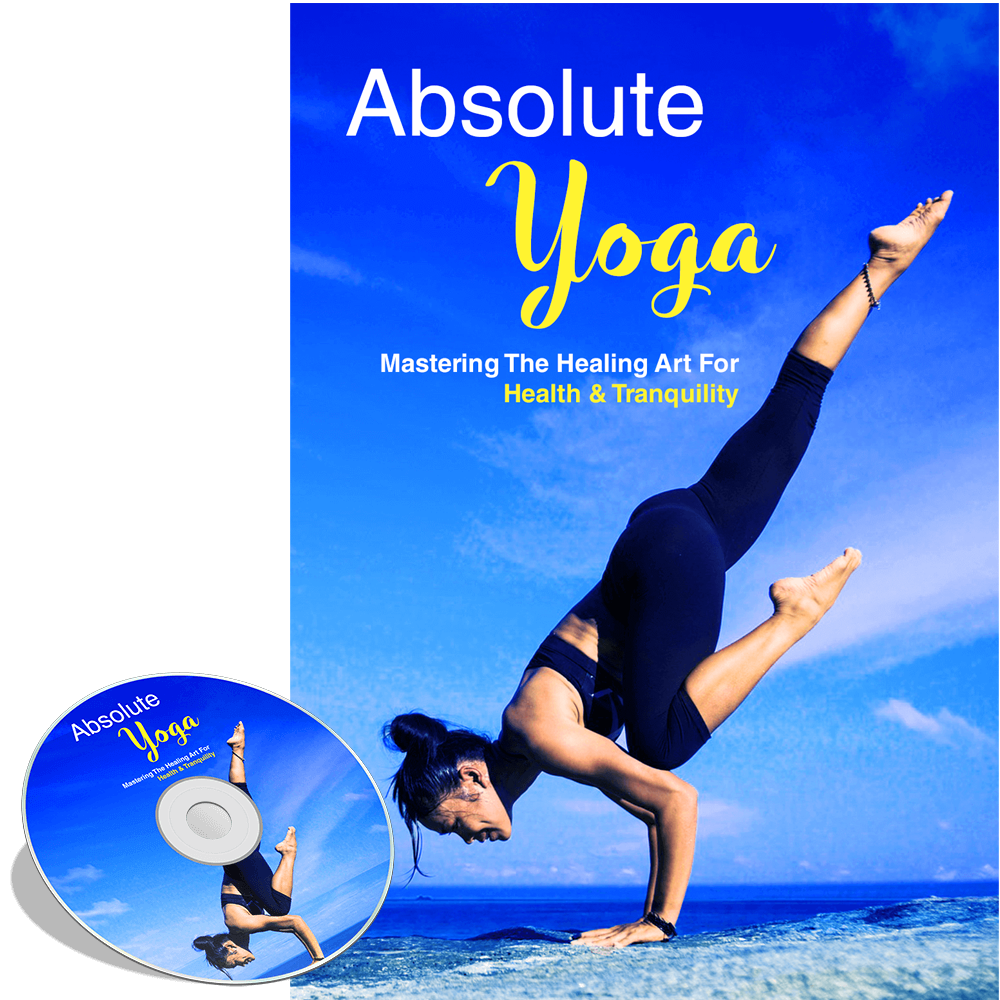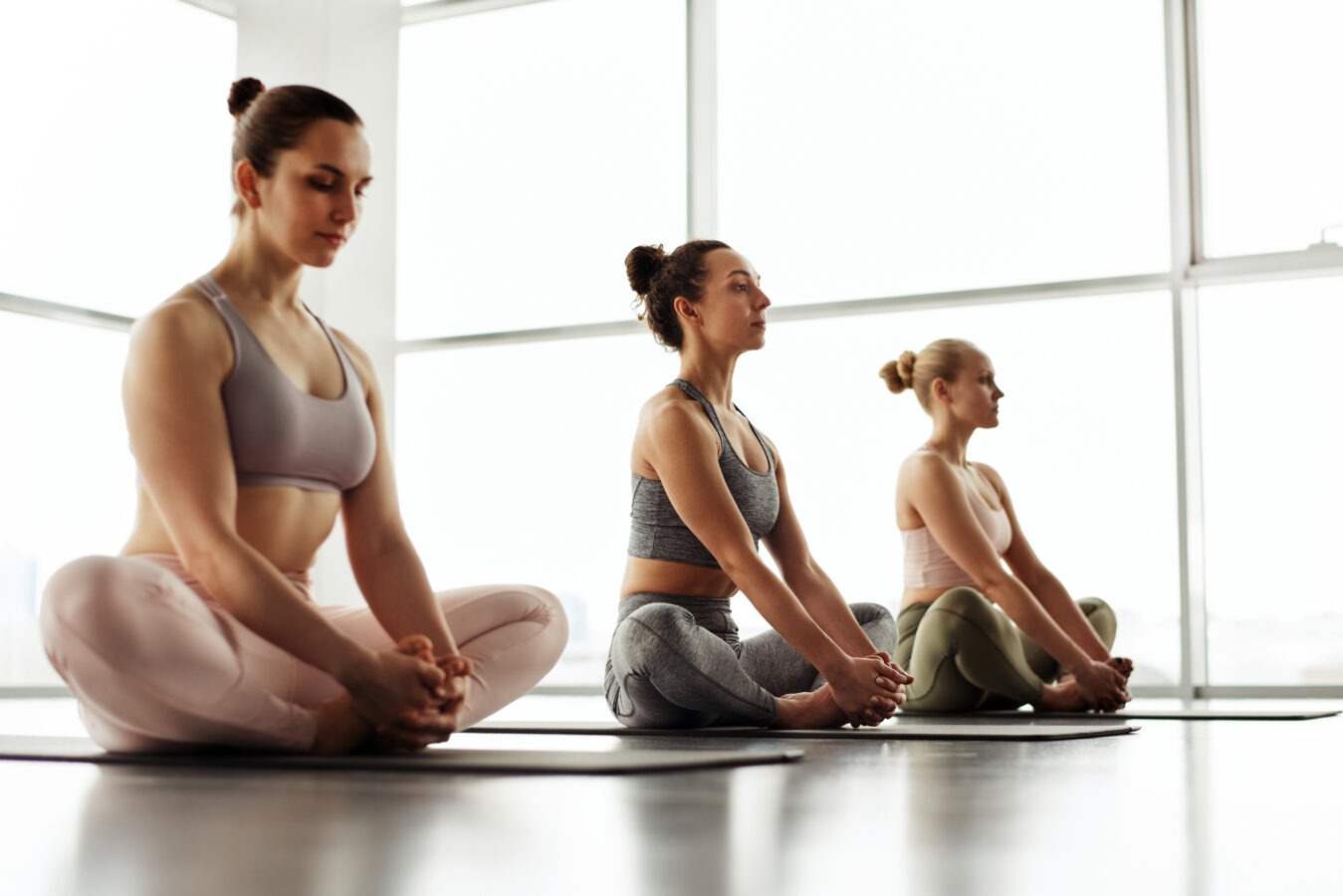Introduction
Ashtanga Yoga is a dynamic and physically demanding style of yoga that originated in the early 20th century. It was developed by Sri K. Pattabhi Jois, who learned the practice from his teacher, T. Krishnamacharya. Ashtanga Yoga follows a specific sequence of postures combined with synchronized breath and movement. It is known for its emphasis on strength, flexibility, and endurance, as well as its focus on integrating breath and movement. Ashtanga Yoga is often practiced in a heated room (hot yoga) to promote detoxification and deep stretching. It is a disciplined and structured practice that aims to purify the body and mind, leading to increased self-awareness and spiritual growth.
The Benefits of Practicing Ashtanga Yoga
Ashtanga Yoga originated in India as a dynamic and physically demanding form of yoga. It is a practice that combines breath control, meditation, and a series of postures to create a holistic approach to physical and mental well-being. While Ashtanga Yoga may not suit everyone, those who practice it regularly can experience many benefits.
One of the key benefits of practicing Ashtanga Yoga is increased strength and flexibility. The postures, known as asanas, are designed to work every muscle in the body, helping to build strength and improve flexibility. Ashtanga Yoga also focuses on the breath, which helps to increase lung capacity and improve overall respiratory function.
In addition to physical benefits, Ashtanga Yoga has numerous mental and emotional benefits. The practice of Ashtanga Yoga requires focus and concentration, which can help to calm the mind and reduce stress. Combining breath control and movement also helps to release tension and promote relaxation. Regularly practicing Ashtanga Yoga can help improve mental clarity and increase overall well-being.
Another benefit of practicing Ashtanga Yoga is improved cardiovascular health. The practice’s dynamic and flowing nature helps increase heart rate and circulation. This can help to lower blood pressure and reduce the risk of heart disease. Regular practice of Ashtanga Yoga can also help to improve digestion and boost the immune system, leading to better overall health.
Ashtanga Yoga is also known for its detoxifying effects on the body. The practice involves a series of postures that help stimulate the lymphatic system, which removes toxins from the body. This can help improve overall health and well-being and promote a sense of vitality and energy.
In addition to the physical and mental benefits, Ashtanga Yoga offers a sense of community and connection. Many practitioners of Ashtanga Yoga develop a strong bond with their fellow yogis, as they share a common practice and journey. This sense of community can provide support, encouragement, and a sense of belonging.
It is important to note that Ashtanga Yoga is a physically demanding practice and may not be suitable for everyone. It is always recommended to consult with a qualified yoga instructor before starting any new exercise program, especially if you have any pre-existing health conditions or injuries.
In conclusion, the benefits of practicing Ashtanga Yoga are numerous and wide-ranging. From increased strength and flexibility to improved mental clarity and cardiovascular health, the regular practice of Ashtanga Yoga can positively impact the body and mind. Whether you are a seasoned yogi or new to the course, Ashtanga Yoga offers a holistic approach to health and well-being that people of all ages and fitness levels can enjoy.

A Beginner’s Guide to Ashtanga Yoga
Ashtanga Yoga originated in India as a dynamic and physically demanding form of yoga. It is a practice that combines breath control, meditation, and a series of postures to create a holistic approach to physical and mental well-being. In this beginner’s guide to Ashtanga Yoga, we will explore this ancient practice’s history, benefits, and key principles.
Sri K. Pattabhi Jois developed Ashtanga Yoga in the early 20th century. Jois was a student of Tirumalai Krishnamacharya, often called the father of modern yoga. Jois refined and popularized the Ashtanga Yoga system, consisting of a set sequence of postures performed in a specific order. This sequence is designed to create heat in the body, purify the internal organs, and build strength and flexibility.
One of the critical principles of Ashtanga Yoga is the synchronization of breath and movement. Each posture is linked to a specific breath, creating a flowing and dynamic practice. This breath control, known as ujjayi breath, helps to calm the mind and focus the attention inward. It also helps to generate heat in the body, which aids in the purification process.
Another critical aspect of Ashtanga Yoga is the concept of vinyasa. Vinyasa refers to the linking of postures with a specific breath and movement. In Ashtanga Yoga, each movement is accompanied by either an inhalation or an exhalation, creating a seamless flow from one posture to the next. This continuous movement helps to build stamina and endurance, as well as improve concentration and mental clarity.
Ashtanga Yoga is known for its physically demanding nature. The practice consists of postures for a specific number of breaths. These postures, known as asanas, range from standing to seated poses, inversions, and backbends. The sequence is designed to systematically work through the entire body, building strength, flexibility, and balance.
In addition to the physical benefits, Ashtanga Yoga offers numerous mental and emotional benefits. The practice helps to calm the mind, reduce stress, and improve focus and concentration. It also promotes self-discipline and self-awareness, as practitioners are encouraged to listen to their bodies and practice with mindfulness and compassion.
Ashtanga Yoga is suitable for people of all ages and fitness levels, although it is recommended that beginners start with a modified version of the practice. Listening to your body and working at your own pace is essential, gradually building strength and flexibility. It is also advisable to seek guidance from a qualified teacher who can provide proper instruction and ensure correct alignment and technique.
In conclusion, Ashtanga Yoga is a dynamic and physically demanding practice that offers numerous benefits for the body and mind. Its emphasis on breath control, movement, and mindfulness creates a holistic approach to well-being. Whether you are a beginner or an experienced practitioner, Ashtanga Yoga can be a transformative and rewarding practice. So, roll out your mat, take a deep breath, and embark on your journey to self-discovery and inner peace.
Exploring the Eight Limbs of Ashtanga Yoga
Ashtanga Yoga is a traditional form of yoga encompassing a comprehensive system of practices. One of the critical aspects of Ashtanga Yoga is the concept of the Eight Limbs, which serve as a guide for practitioners to achieve a state of self-realization and inner peace. These Eight Limbs, also known as Ashtanga, provide a framework for individuals to cultivate physical, mental, and spiritual well-being.
The first limb of Ashtanga Yoga is Yama, which refers to ethical principles and moral disciplines. Yama consists of five components: Ahimsa (non-violence), Satya (truthfulness), Asteya (non-stealing), Brahmacharya (celibacy or moderation), and Aparigraha (non-possessiveness). By practicing these principles, individuals learn to live in harmony with themselves and others, fostering a sense of compassion and respect.
The second limb, Niyama, focuses on self-discipline and spiritual observance. Niyama consists of five components: Saucha (cleanliness), Santosha (contentment), Tapas (discipline), Svadhyaya (self-study), and Ishvara Pranidhana (surrender to a higher power). Through these practices, individuals develop self-awareness, gratitude, and a deeper connection with their inner selves.
The third limb, Asana, is the physical practice of yoga postures. Asanas strengthen and purify the body, improve flexibility, and enhance overall well-being. Individuals cultivate physical strength, balance, and focus by practicing asanas, preparing the body for more profound spiritual practices.
The fourth limb, Pranayama, involves breath control and regulation. Pranayama techniques help individuals harness the life force energy within them, known as prana. By practicing Pranayama, individuals learn to control their breath, calm their minds, and increase their vitality and energy levels.
The fifth limb, Pratyahara, refers to the withdrawal of the senses. In this stage, individuals learn to detach themselves from external distractions and turn their attention inward. By practicing pratyahara, individuals develop heightened awareness and concentration, paving the way for more profound meditation.
The sixth limb, Dharana, is the practice of concentration. Dharana involves focusing the mind on a single point or object, such as a mantra or the breath. Through this practice, individuals cultivate mental clarity, focus, and the ability to quiet the mind.
The seventh limb, Dhyana, is the practice of meditation. Dhyana involves maintaining a state of uninterrupted focus and awareness. By practicing meditation, individuals experience a sense of inner peace, stillness, and connection with their true selves.
The eighth and final limb, Samadhi, is the ultimate goal of Ashtanga Yoga. Samadhi is a state of complete absorption and union with the divine. In this state, individuals experience a profound sense of bliss, transcendence, and oneness with all that exists.
The Eight Limbs of Ashtanga Yoga provide a holistic approach to self-realization and spiritual growth. By incorporating these practices into their lives, individuals can cultivate physical strength, mental clarity, and spiritual awakening. Ashtanga Yoga offers a path for individuals to explore and deepen their understanding of themselves and their world. Through dedicated practice and commitment, practitioners can experience the transformative power of Ashtanga Yoga and embark on a journey of self-discovery and inner peace.
How Ashtanga Yoga Can Improve Your Flexibility and Strength
Ashtanga Yoga is a dynamic and physically demanding form that can significantly improve your flexibility and strength. This ancient practice originated in India and focuses on synchronizing breath with a series of postures, or asanas, to create a flowing and meditative movement. You can experience various physical and mental benefits by consistently practicing Ashtanga Yoga.
One of the critical benefits of Ashtanga Yoga is its ability to enhance flexibility. The practice involves a series of poses that target different muscle groups and joints, gradually increasing your range of motion. As you progress through the sequence, you will become more flexible and able to move quickly. This increased flexibility improves your physical performance and reduces the risk of injuries in other physical activities.
In addition to flexibility, Ashtanga Yoga also builds strength. The practice requires you to hold challenging poses for an extended period, which engages and strengthens your muscles. The repetitive nature of the course also helps to build endurance and stamina. As you progress through the series, your muscles become stronger and more toned. This increased strength benefits your yoga practice and enhances your overall physical performance in other activities.
Furthermore, Ashtanga Yoga is a full-body workout that engages all major muscle groups. The practice includes a variety of standing, seated, and balancing poses that target different areas of the body. Regularly practicing Ashtanga Yoga can achieve a balanced and well-rounded physique. The practice also helps improve your posture, strengthening the muscles that support your spine. This can alleviate back pain and improve your overall alignment.
In addition to the physical benefits, Ashtanga Yoga positively impacts your mental well-being. The practice requires focus and concentration as you move through the sequence of poses with mindful awareness of your breath. This meditative aspect of Ashtanga Yoga helps to calm the mind and reduce stress. It promotes a sense of inner peace and tranquility, allowing you to better cope with the challenges of daily life.
Moreover, Ashtanga Yoga can also improve your body awareness. The practice encourages you to listen to your body and honor its limitations. You can better understand your physical capabilities and limitations by paying attention to how your body feels in each pose. This increased body awareness can help prevent injuries and allow you to make modifications when necessary.
In conclusion, Ashtanga Yoga is a powerful practice that can significantly improve flexibility and strength. Through its dynamic and challenging sequence of poses, it engages all major muscle groups and gradually increases your range of motion. The practice has numerous mental benefits, including stress reduction and increased body awareness. By incorporating Ashtanga Yoga into your fitness routine, you can experience a transformation in both your physical and mental well-being. So, roll out your mat and embark on a journey of self-discovery and transformation through Ashtanga Yoga.
The Philosophy and History of Ashtanga Yoga
Ashtanga Yoga is a popular and dynamic form of yoga that has gained a significant following in recent years. This style of yoga is known for its rigorous physical practice and emphasis on breath control and meditation. To fully understand and appreciate Ashtanga Yoga, it is essential to delve into its philosophy and history.
The philosophy of Ashtanga Yoga is rooted in the ancient text known as the Yoga Sutras of Patanjali. This text outlines yoga’s eight limbs, or steps, which guide practitioners on their spiritual journey. Ashtanga Yoga focuses on the third limb, known as asana, which refers to the physical postures practiced in yoga. These postures are designed to purify the body and prepare it for meditation.
The history of Ashtanga Yoga can be traced back to the teachings of Sri K. Pattabhi Jois, who popularized this style of yoga in the 20th century. Jois was a student of T. Krishnamacharya, a renowned yoga teacher often referred to as the father of modern yoga. Jois developed the Ashtanga Yoga system based on the teachings he received from Krishnamacharya.
The Ashtanga Yoga system consists of a set sequence of postures practiced in a specific order. This sequence is divided into six series, each with its focus and difficulty level. The primary series, also known as Yoga Chikitsa, is the foundation of the practice and focuses on detoxifying and aligning the body. The subsequent series, known as the intermediate series, builds upon the foundation established in the primary series and introduces more challenging postures.
One of the defining characteristics of Ashtanga Yoga is the use of vinyasa, which refers to synchronized movement and breath. Each movement is linked to a specific breath, creating a flowing and dynamic practice. This continuous flow of movement and breath helps to build heat in the body, purify the nervous system, and cultivate a meditative state of mind.
In addition to the physical practice, Ashtanga Yoga incorporates other elements such as bandhas, energy locks, Drishti, or focused gaze. The bandhas harness and direct energy flow within the body, while the drishti helps cultivate concentration and inner awareness.
Ashtanga Yoga is often described as a moving meditation, requiring practitioners to be fully present and focused on their breath and movement. This practice of mindfulness and self-awareness is an integral part of the Ashtanga Yoga philosophy.
In conclusion, yoga ashtanga is a dynamic and transformative practice that combines physical postures, breath control, and meditation. Its philosophy is rooted in the eight limbs of yoga, with a particular emphasis on asana. The history of Ashtanga Yoga can be traced back to the teachings of Sri K. Pattabhi Jois, who developed the Ashtanga Yoga system based on his teacher, T. Krishnamacharya. Ashtanga Yoga is characterized by a set sequence of postures, synchronized movement and breath, and the incorporation of bandhas and drishti. By embracing the philosophy and history of Ashtanga Yoga, practitioners can deepen their understanding and experience of this transformative practice.
Conclusion
In conclusion, Ashtanga Yoga is a dynamic and physically demanding form of yoga that focuses on synchronizing breath with a series of postures. It offers numerous benefits, such as increased strength, flexibility, and mental clarity. With its emphasis on discipline and self-practice, Ashtanga Yoga can be a transformative practice for individuals seeking physical and psychological well-being.









